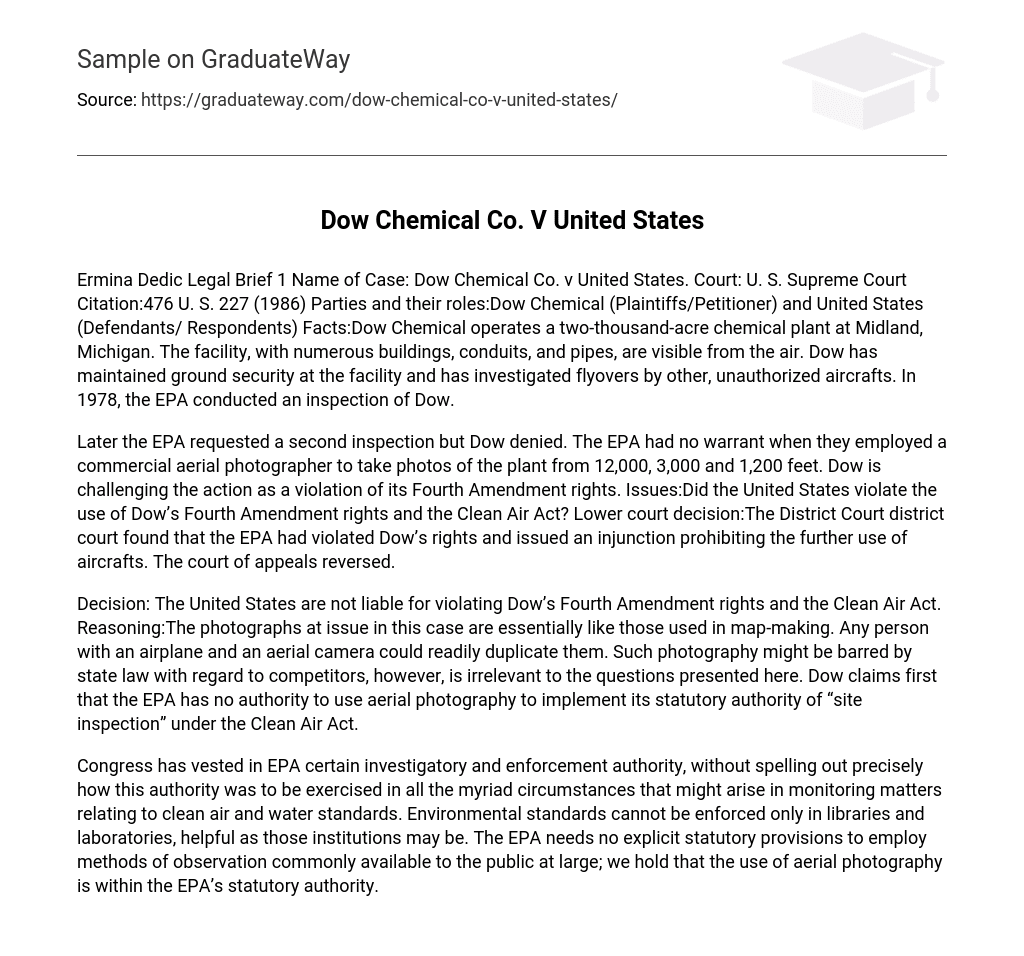Ermina Dedic Legal Brief 1 Name of Case: Dow Chemical Co. v United States. Court: U. S. Supreme Court Citation:476 U. S. 227 (1986) Parties and their roles:Dow Chemical (Plaintiffs/Petitioner) and United States (Defendants/ Respondents) Facts:Dow Chemical operates a two-thousand-acre chemical plant at Midland, Michigan. The facility, with numerous buildings, conduits, and pipes, are visible from the air. Dow has maintained ground security at the facility and has investigated flyovers by other, unauthorized aircrafts. In 1978, the EPA conducted an inspection of Dow.
Later the EPA requested a second inspection but Dow denied. The EPA had no warrant when they employed a commercial aerial photographer to take photos of the plant from 12,000, 3,000 and 1,200 feet. Dow is challenging the action as a violation of its Fourth Amendment rights. Issues:Did the United States violate the use of Dow’s Fourth Amendment rights and the Clean Air Act? Lower court decision:The District Court district court found that the EPA had violated Dow’s rights and issued an injunction prohibiting the further use of aircrafts. The court of appeals reversed.
Decision: The United States are not liable for violating Dow’s Fourth Amendment rights and the Clean Air Act. Reasoning:The photographs at issue in this case are essentially like those used in map-making. Any person with an airplane and an aerial camera could readily duplicate them. Such photography might be barred by state law with regard to competitors, however, is irrelevant to the questions presented here. Dow claims first that the EPA has no authority to use aerial photography to implement its statutory authority of “site inspection” under the Clean Air Act.
Congress has vested in EPA certain investigatory and enforcement authority, without spelling out precisely how this authority was to be exercised in all the myriad circumstances that might arise in monitoring matters relating to clean air and water standards. Environmental standards cannot be enforced only in libraries and laboratories, helpful as those institutions may be. The EPA needs no explicit statutory provisions to employ methods of observation commonly available to the public at large; we hold that the use of aerial photography is within the EPA’s statutory authority.





